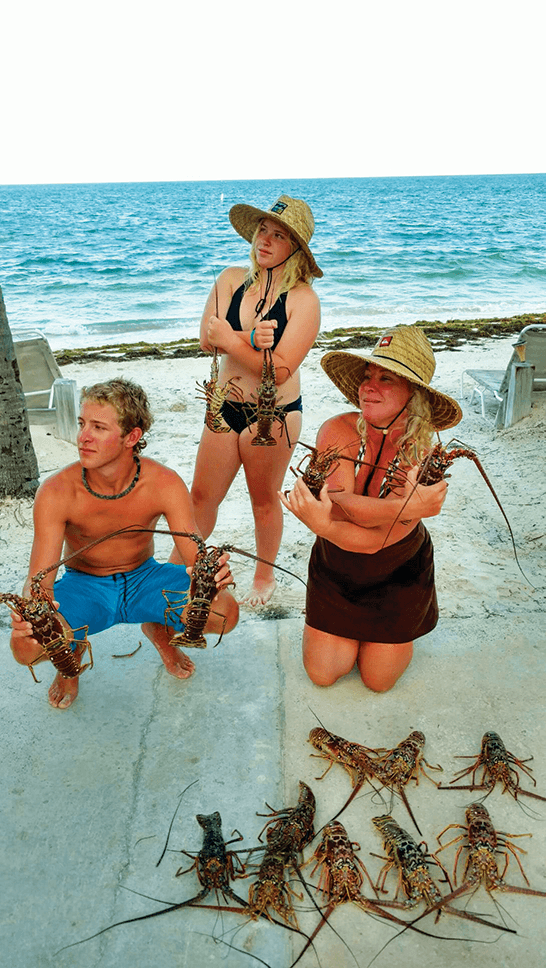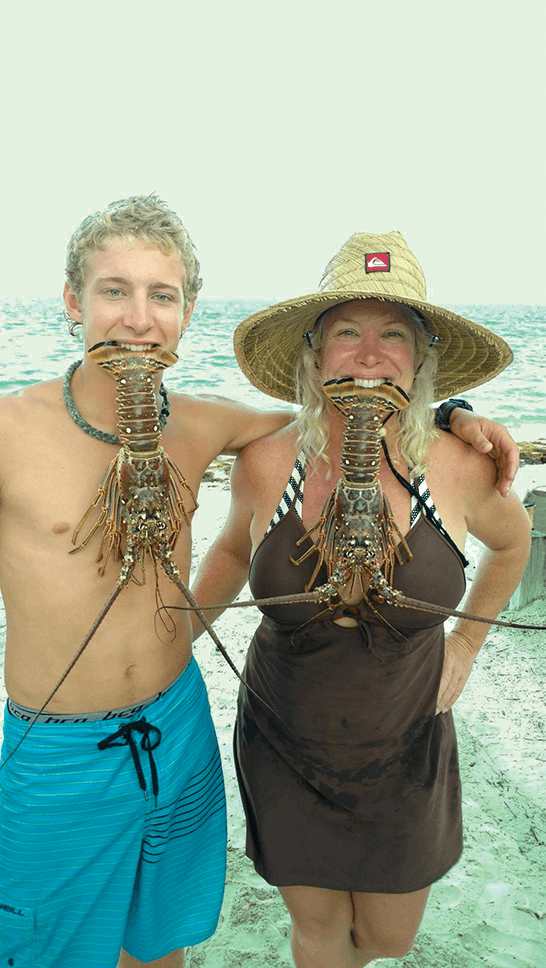by Misty Wells
Everything about Mini Season is Big; the lobster, the fun and the caravan of divers heading to the Keys and the east coast to kick off the first of two lobster seasons in Florida. The two-day mini season in Florida this year is July 25th & 26th, regular season is not far behind starting August 6th through the 31st of March. As “Bug Fever” fills the air and the countdown begins, it is time to dust off your equipment or if you are new to the sport, make your shopping list. The great thing about catching “Bug Fever” is you really don’t need a lot of expensive equipment to get started. The beginner can get started with a mask, snorkel, tickle stick, gloves and lobster net, throw in a sense of adventure and you are ready to make some dinner plans.
Regardless of whether you are a beginner or expert, one of the most important things is location and knowing how to find the sometimes elusive bugs. One of the great things about Florida Spiny Lobster is they are nocturnal, so that does make them easier to catch. Popular lobster hangouts are ledges, patch reefs, holes, big coral heads, and just about any type of structure where the lobster can hide. A lot of seasoned “pro’s” have their secret spots and many of these gems can be found in shallow water; I have limited- out of lobster in 3 feet of water in the Key West. A tell-tale sign to look for is their antennae sticking out. They use these extremely sensitive appendages to detect danger and if touched will then start to go deeper into their hiding places. Once you locate a set of antennae, take your tickle stick and place it behind the lobster to gently urge them out and slowly walk them into your net. Once they are in your net, grab the excess material to quickly close the net or they will do the “boot scoot boogie” and be gone.
A few important things you must know in order to bring home your catch and most importantly, everyone safely back to the dock. First and foremost, make sure to have your “diver down” flag up at all times when someone is in the water. Whether you are snorkeling or diving, it is also important that with the heavy boat traffic, folks swim and surface close to the boat.
Another important reminder is to have your measurement gauge attached to your tickle stick for lobster, as they must be measured in the water. The lobster’s carapace has to be larger than 3 inches. This means the lobster is at least 2 or 3 years old and has reproduced at least one season. To measure the lobster, place the end of your gauge between the horns and the other at the end of the carapace. If it is under 3”, release and keep looking. You are allowed 12 lobsters per person, per day during “mini season” and 6 lobsters per person per day during “regular season”. There are a few exceptions on limits, with Monroe County, Biscayne National Park, and a few places you are not allowed to harvest lobster during certain times, so be sure to check the FWC regulations before going. Remember, you must have a lobster stamp on your saltwater fishing licenses and you cannot harvest them off any man-made structures.
Once back at the dock cleaning them is easy. Grab both hands around the lobster and twist in the opposite direction, to separate the carapace from the tail. The next step is to remove the waste track from the tail, I like to use one of the antennae to accomplish this goal. If you are not sure how to clean a lobster, there are some great websites to take a look at before going out. There are also lots of groups at the docks that will do it for you for a small fee. Now, here comes the easy part; fire up the grill, grab a cold beverage, sit back, and admire the lovely seafood dinner you and your family will be having.
Misty Wells is host of “Let’s Take it Outside” a TV show & radio show, a outdoor & travel writer, tournament director & adventure fishing & hunting trips. Founder of “A Reel Future” a non-profit organization devoted to sharing knowledge & passion of fishing and the great outdoors, to foster kids statewide. For show info or to be a guest, go to www.mistywells.com.
sara


